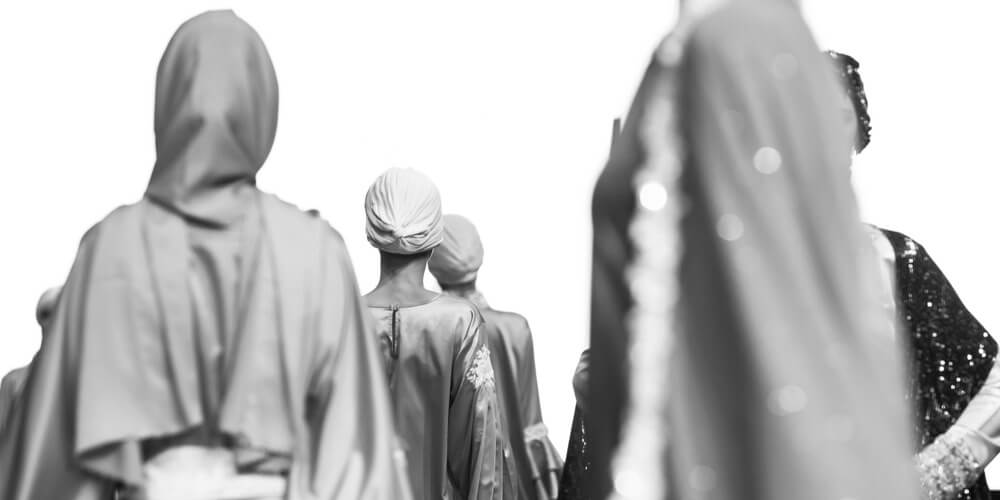SGIE 2022 Report: Modest fashion
Muslim spend on fashion increased 5.7% in 2021 and is slated to grow 6% annually over the next four years as High Streets and fashion shows recognise this crucial market.
High Street retailers and fashion houses are witnessing increased sales in modest garments as the industry has adapted and rising vaccination rates in developed countries have underpinned turnovers.
DinarStandard’s State of the Global Islamic Economy Report 2022 reflected modest fashion had been performing well before the COVID-19 global pandemic, but akin to the rest of the fashion industry, saw a decline during its height.
However, last year the industry saw recovery as it accepted the changes required.
The report estimates Muslim spend on fashion increased 5.7% in 2021 to $295 billion; should touch $313 billion this year and achieve a 6.1% four-year compound annual growth rate to $375 billion by 2025.
See - Infographic SGIE 2022: Modest fashion
The three largest markets for consumer spend on clothing and footwear are Iran, Turkey and Pakistan followed closely by Saudi Arabia. Aaliya Mia, an associate at DinarStandard and Modest Fashion sector lead for the SGIE report, said non-Muslim majority countries such as India and the US also presented a significant opportunity for modest wear with both ranking within the top 10 highest Muslim consumer spend amounts.
The top five suppliers of fashion products to Organisation of Islamic Council (OIC) countries are China, India, Turkey, Italy and Vietnam, constituting almost 76% of its global supply.
“There is high potential for trade between OIC member countries as there are many similarities in the types of clothing preferred such as traditional styles and weather suitability,” said Mia.
During the pandemic the sector increasingly shifted its sales strategy towards e-commerce with high double-digit turnover growth in the major fashion markets of Turkey, Indonesia, Malaysia and the Gulf Cooperation Council (GCC) countries. Brands have invested heavily in digital sales and marketing, while fashion shows have gone virtual, often with positive outcomes as the events reach more eyeballs than before.
Mia said young modest fashion brands were catching investor attention and being included in key mainstream fashion weeks. Indicative of such strategies is Turkish modest fashion giant Modanisa launching a platform in Malaysia with a virtual fashion show, while last Ramadan the site experienced a 70% sales surge in the UK.
“Digital shopping platforms such as traditional e-commerce and social media platforms have grown in popularity and allowed for modest fashion businesses to stay afloat during the pandemic. Consumers have also become more open to using these platforms. Specialised hijabs and modest wear for sports and other niche purposes continue to be popular and attract interest,” said Mia.
Investment has flowed into digitalisation with US-based Haute Hijab launching its UK site following funding from a venture capital firm. Modest fashion luxury brand Elle B Zhou launched using a specially created 3D virtual version of Saudi model Shahad Salman.
New apps have been released, while social media, artificial intelligence and consumer outreach are being increasingly used to gain consumer attention.
However, bricks-and-mortar stores have retained their allure with new modest fashion stores opening in the GCC and East Asia. Mainstream fashion brands have developed modest fashion lines, often through collaborations, with new hijab collections garnering particular attention as well as for innovative modest sportswear. Notably, Malaysian brands Mimpikita and CalaQisya have partnered with Disney for their modest wear collections.
With the pandemic changing consumer behaviour, brands have doubled-down on initiatives for more ethical and sustainable sourcing, while inclusivity has also become a key focus. This has played into the hands of the modest fashion sector with an additional push from several new platforms to educate people about modest fashion.
Governments from the GCC to East Asia have been catalysts for sectoral growth, backing fashion shows; supporting start-ups and aiding the overall ecosystem. However, in non-Muslim majority countries there has been some push-back with laws proposed to ban the hijab and niqab in several European countries.
“OIC member countries such as Saudi Arabia and Indonesia have continued to invest in the modest wear industry with specialist incubator programmes proving useful to start-ups. More media platforms have included imagery of women wearing the hijab, but negative media depictions of Muslims persist,” said Mia.
The report indicated that, as the fashion industry recovers, the total deal value in the apparel and modest fashion sector increased to $28 million from $3.4 million in 2019/20 with the total number of deals increasing to seven from the previous year.
“As mainstream retailers seek to become increasingly inclusive, we can expect to see more modest wear ranges included in stores with good opportunities for collaborations between modest wear brands and mainstream retailers. Modest wear, in general, could see greater inclusion for plus-size and differently-abled consumers, while textile developments will lead to new hijab and modest wear products specifically tailored for different purposes such as personal protection equipment or sporting codes,” said Mia.
© SalaamGateway.com 2022. All Rights Reserved
